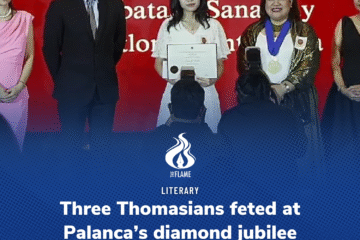By FATIMA B. BADURIA

WITHIN the gloom of Philippine folklore are monstrous creatures that drive the stories told in the dark. These horrors may seem fictional, however, they do not stray far from reality. In legends, there are ravenous aswangs who possess great strength and hunt on human bodies. On the other hand, in real life, there are power-hungry people who prey on the less fortunate to acquire more wealth. Although these exploitations initially only bring grief, it can also ensue the emergence of heroes.
In the case of Blood Hunters: Rise of the Hybrids, aswang slayers are the line of defense against the insatiable hunger of the man-eating creatures. However, the waging war is not founded on the natural differences between the two sides. The film ingeniously portrays that the battle is not born merely out of hatred for the creatures but after their evil acts.
Directed and written by Vincent Soberano, the Blood Hunters: Rise of the Hybrids is one of the premium films for Pista ng Pelikulang Pilipino. Soberano also co-stars with Sarah Chang, Monsour del Rosario, Roxanne Barcelo, and Ian Ignacio. It chronicles the battle between bloodthirsty aswangs and the Blood Hunters. One of them is Gabriela (Sarah Chang), a fierce and well-known hunter. Her grudge against the murderous aswangs leads her to join a crew of ferocious warriors who aim to defeat the cruel aswangs wreaking havoc across the land. To heighten the probability of victory, they collaborate with Bolo (Vincent Soberano), one of the original Blood Hunters turned half-aswang. Together with Monte (Monsour del Rosario), Kali (Roxanne Barcelo), and Max (Ian Ignacio), the Blood Hunters attack their enemies’ lair.
The film commences with a brief backstory illustrated with comic strips, colored in black, white, and red tones. It narrates the long-existing enmity between humans and aswangs as well as the emergence of the first hybrid. This visual style constantly reappears in between segments where the current scene stills into images before framing the illustration of the next scene. The artistic transition makes the viewing experience similar to traversing a mythological comic book.
The adoption of Filipino culture does not end on the matter of mythology. In fact, the film employs the Philippine martial art Arnis as the Blood Hunters’ mode of combat against their opponents. They even utilize traditional stick and bladed weapons such as the arnis and Balaraw steel.
However, despite an extensive integration of Filipino culture, the English language is used throughout the film. This drawback decreases the authenticity of the culture present in the film. One reason for this may be to engage with wider audiences in screenings in international film festivals. This, unfortunately, diminishes the nationalistic value of the film, although not entirely eliminating it.
Despite the cultural aspects present, there is a lack of solid character development. Distinctions between individuals are superficial, accounting for only their genus— human, aswang, or hybrid. Although Gabriela and Bolo are given separate personal backstories to describe their motives as Blood Hunters, they are also similar to the extent of indistinctiveness. This may be partly due to their lifeless and monotonous acting. Throughout the film, the Blood Hunters mostly displayed the same facial expression: knitted brows and fierce eyes.
However, the film excels in how it stages its action scenes. With a cast of martial artists, the choreography is exceptional and markedly polished. The actions are executed with boldness and elegance despite its complexity.
Despite being a fantasy and action-driven movie, the film still finds its footing in reality. It even delivers the message that monstrosity and humanity alike can co-exist in anyone, regardless of physical features. It lies in an individual’s judgment to choose which arises as one’s true nature. F



